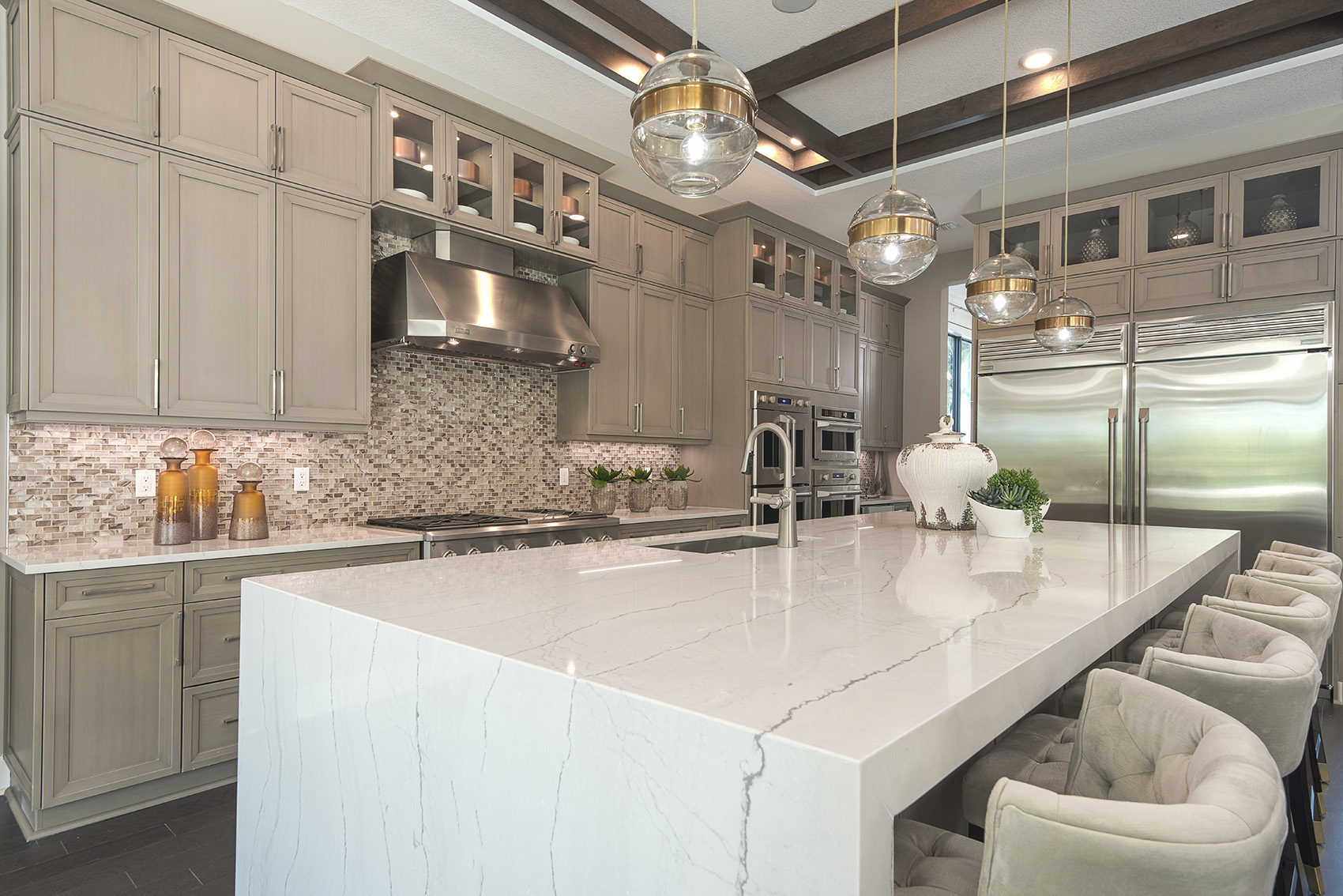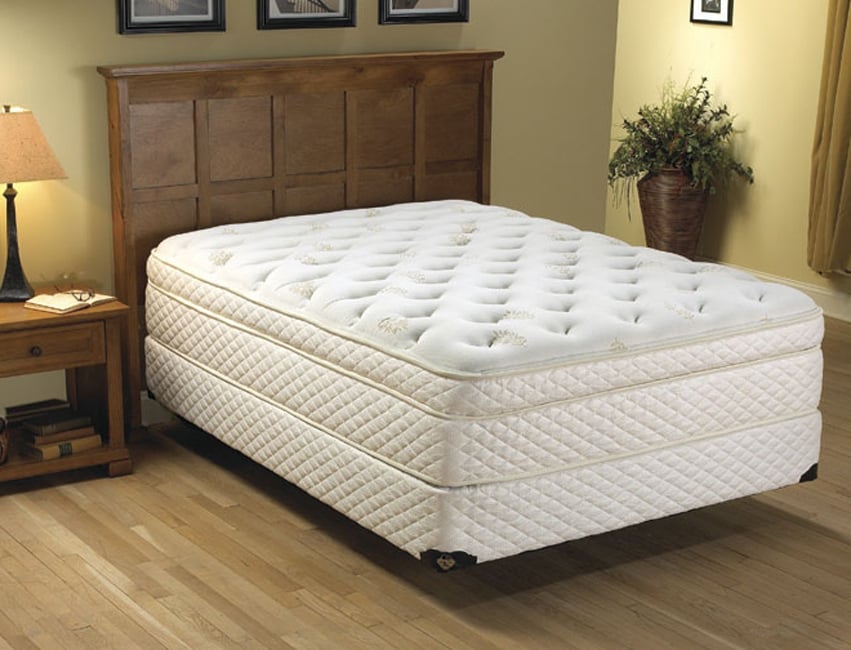Recycled lumber and reclaimed wood, such as salvaged barn wood, are both great sustainable materials for a kitchen. Reclaimed wood has beauty and character, as well as being functional for cabinetry, countertops, and flooring. Recycled lumber is also extremely durable and can be used for these same purposes, plus salvaged items can add an interesting look to a kitchen.Recycled Lumber & Reclaimed Wood
A kitchen isn't a kitchen without countertops, so it's important to consider countertops made from sustainable materials. Options include bamboo, recycled glass, paper composite, recycled aluminum, cork, and wood. All of these are available in a wide range of colors and patterns for a truly unique kitchen.Eco-Friendly Countertops
Choosing non-toxic paints and stains is a must if you're looking for an eco-friendly kitchen design. Most paints these days are made with low or no VOCs (volatile organic compounds), so they won't be adding any pollutants to the air. They also come in many colors to match any decor.Non-Toxic Paint & Stains
When selecting the fixtures for your kitchen, look for products that are made with low-impact materials, such as low-flow toilets and faucets, low wattage LED lighting, or items made from recycled glass. If possible, try to find fixtures with the WaterSense label, which indicates that the item meets strict criteria for optimal water efficiency.Low-Impact Kitchen Fixtures
If you're using recycled or reclaimed wood, be sure to also look for low VOC adhesives and finishes that won't emit harmful chemicals into the air. Low VOC adhesives and finishes are a great way to ensure that you are still using sustainable materials even if you are using wood that has been previously used and processed.Low VOC Adhesives & Finishes
Cork is a great way to add warmth and texture to your kitchen, as well as being very eco-friendly. Cork is made from a renewable resource, and it will last for years in a kitchen environment. It is also non-toxic, water-resistant, and easy to clean.Cork Flooring & Backsplashes
Look for appliances and lighting that is labeled as energy efficient. Energy Star and other ratings can help you find the most efficient items for your kitchen. These appliances and lighting will use less energy, which can help reduce your utility bills as well as your impact on the earth.Green Appliances & Lighting
Low flow and water-saving sinks and faucets can help you conserve water, while still looking beautiful in your kitchen. These sinks and faucets are made with high-efficiency materials and can be found in a variety of sizes and styles to fit any kitchen.Water-Saving Sinks & Faucets
Organic and natural fabrics are an excellent way to add texture and color to your sustainable kitchen. Hemp, linen, and cotton are all excellent choices, as they are made without harsh chemicals or pesticides. Plus, they are durable and look great in any kitchen.Organic & Natural Fabrics
Look for cabinetry made from sustainable woods and materials, such as bamboo, cork, wool, and reclaimed wood. Be sure to look for cabinets made with low-VOC coatings, and non-toxic finishes. With all of these materials, you can create a truly beautiful and sustainable kitchen design that is good for both you and the environment.Sustainable Cabinetry
Designing a Sustainable Farm Kitchen
 One of the best ways to create a sustainable home is to prioritize environmental-conscious kitchen design. Working with sustainable materials in the kitchen helps homeowners reduce their environmental impact and be more energy efficient. Many classic kitchen features like cabinets, sinks, tile, and other finishes can be sourced from sustainable resources, which minimizes the use of new materials while optimizing their durability and performance.
One of the best ways to create a sustainable home is to prioritize environmental-conscious kitchen design. Working with sustainable materials in the kitchen helps homeowners reduce their environmental impact and be more energy efficient. Many classic kitchen features like cabinets, sinks, tile, and other finishes can be sourced from sustainable resources, which minimizes the use of new materials while optimizing their durability and performance.
Prioritizing Function and Efficiency
 Function and efficiency
should be the primary focus of any sustainable
kitchen design
. By investing in quality materials that have long lifespans, you can reduce the environmental impact of the kitchen and decrease the frequency of remodels while still achieving a modern aesthetic. By opting for durable materials like reclaimed wood, bamboo flooring, and natural stone countertops, homeowners can create a kitchen space that is both pleasing to the eye and easy to maintain.
Function and efficiency
should be the primary focus of any sustainable
kitchen design
. By investing in quality materials that have long lifespans, you can reduce the environmental impact of the kitchen and decrease the frequency of remodels while still achieving a modern aesthetic. By opting for durable materials like reclaimed wood, bamboo flooring, and natural stone countertops, homeowners can create a kitchen space that is both pleasing to the eye and easy to maintain.
Mindful Appliances and Lighting
 While it may be tempting to opt for modern appliances and lighting in the kitchen, focusing on energy efficiency can help homeowners save on their monthly energy bill while reducing their environmental impact. Low-flow faucets and energy-efficient LED lighting are some of the best practices to help reduce energy consumption in a sustainable kitchen. Homeowners can also opt for eco-friendly appliances that meet the highest standards of energy efficiency and performance.
While it may be tempting to opt for modern appliances and lighting in the kitchen, focusing on energy efficiency can help homeowners save on their monthly energy bill while reducing their environmental impact. Low-flow faucets and energy-efficient LED lighting are some of the best practices to help reduce energy consumption in a sustainable kitchen. Homeowners can also opt for eco-friendly appliances that meet the highest standards of energy efficiency and performance.
Choosing the Right Finishings
 When choosing materials for the kitchen, it is important to consider the balance between style and sustainability. Natural materials like wood, stone, ceramic, and glass can all provide a beautiful finish while still adhering to sustainable principles. A variety of colors, textures, and finishes can be combined to create a modern and inviting kitchen space that is both eco-friendly and cost-effective.
When choosing materials for the kitchen, it is important to consider the balance between style and sustainability. Natural materials like wood, stone, ceramic, and glass can all provide a beautiful finish while still adhering to sustainable principles. A variety of colors, textures, and finishes can be combined to create a modern and inviting kitchen space that is both eco-friendly and cost-effective.






























































































